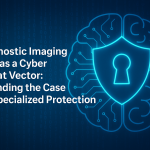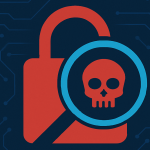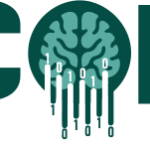As organizations across various sectors, including government, finance, education, and research, increasingly rely on third-party data for crucial insights, the management and processing of this data becomes a significant challenge. The data drawn from external sources can be diverse, encompassing elements like historical demographic statistics, weather information, satellite imagery, and proprietary company data. It can also be voluminous and time-sensitive, requiring on-demand processing capabilities. Given this complexity, it is essential to ensure these data flows can scale effectively, accommodating the addition of new data providers and growth in the volume of data ingested.
However, an important aspect of managing this influx of data is dealing with the security risks associated with external, often untrusted, sources. One such risk is the potential for malicious content hidden using steganography, a technique that could lead to serious security breaches if not detected and managed correctly.
Steganography and its Risks:
Steganography is an advanced technique for covertly embedding information within a range of carrier files, such as images, audio, video, or text documents. In contrast to cryptography, which aims to render data unreadable, the objective of steganography is to render the data undetectable. Cybercriminals often employ this approach to insert harmful code or data into seemingly innocuous files, thereby circumventing conventional security measures without arousing suspicion. Once infiltrated into a system, this concealed content can initiate various malicious operations, such as data theft, network compromise, or ransomware introduction, potentially leading to serious consequences like financial loss, damaged reputation, and regulatory sanctions.
In the domain of malware attacks and data exfiltration, steganography plays a significant role. Attackers leverage steganography for various reasons:
- Concealment: Steganography enables attackers to camouflage harmful content within seemingly benign files, presenting a considerable challenge for personnel and traditional security software in detecting the concealed malware.
- Evasion: Unlike cryptography, which makes data unreadable but not invisible, the goal of steganography is to obfuscate the existence of data, making it a powerful tool for bypassing conventional security measures.
- Persistence: If an attack remains undetected, it can persist within a network for an extended duration, allowing the attacker to continue data harvesting, network penetration, or attainment of their objectives.
- Data Exfiltration: Steganography can be employed to hide data that is being illicitly removed from a network. By embedding the data within routine network traffic, attackers can evade detection while exfiltrating sensitive information.
The Role of StegoCommand:
To counter these threats, screening incoming data feeds for steganographic content becomes crucial. This is where WetStone Technologies’ StegoCommand comes into play, offering organizations a frontline defense against hidden malicious content.
Given the sheer volume and critical nature of these data flows, StegoCommand ensures that the data entering your organization is thoroughly inspected. It’s a tool designed for organizations needing to safely ingest and inspect data from external providers, capable of adapting to unique data requirements and supporting a wide range of file types.
StegoCommand integrates seamlessly into existing workflows, operating efficiently in both on-premise and cloud-native environments. This versatility ensures a secure and efficient operation, tailored to your organization’s preferred infrastructure.
Using advanced detection algorithms, StegoCommand swiftly identifies the presence of steganography in suspect files. It is compatible with most Linux environments and can scale up as required, supporting high-volume data feeds and the analysis of large files.
In addition to detection, StegoCommand provides extensive reporting, ranking detections on a severity scale. It flags files deemed to pose a certain threat level and probability, providing crucial input for subsequent quarantining and further analysis.
StegoCommand as the Primary Defense:
StegoCommand operates effectively within both cloud-based and on-premise environments, providing essential data screening services. It identifies potential steganographic content within high-volume data streams in near real-time, while maintaining rigorous standards to minimize both false positives and false negatives. This serves to mitigate the risks associated with advanced steganography.
StegoCommand serves as the primary line of defense, examining files for various indicators of steganographic content, from statistical and structural anomalies to data appending and file name obfuscation. It supports many standard file types out-of-the-box. As StegoCommand identifies potentially compromised files, these can be quarantined for further examination. At this stage, investigators can utilize WetStone’s StegoAnalyst, a visual steganalysis tool, for a deeper, more granular investigation of the suspected steganographic carriers.
Professional Services and Collaboration:
Furthermore, WetStone Technologies provides professional services, including the development of algorithms for steganography detection in additional file types, expert examination of detections, and workflow reviews. The WetStone team is ready to collaborate directly with clients to enhance the capabilities of both StegoCommand and StegoAnalyst for unique or industry-specific file types.
Summary:
Steganography is increasingly employed by attackers to conceal their activities and evade detection. StegoCommand serves as a critical defense by effectively screening ingested files for embedded steganographic content. It is designed to scale and meet the demands of high-volume data streams and business-critical workflows, ensuring data integrity and bolstering security in today’s evolving threat landscape. Drawing on WetStone’s decades of experience in steganography research and development, StegoCommand plays an essential role in identifying and mitigating potential threats, thereby safeguarding organizations’ trusted environments.






